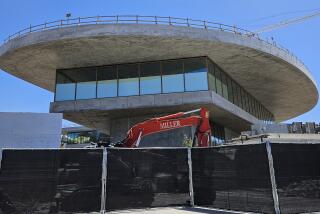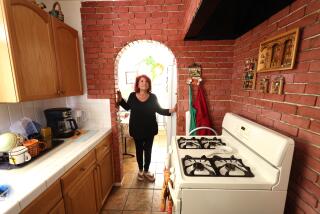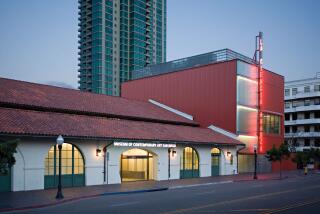Freeway Work Shuts Down Printing Press Museum
- Share via
BUENA PARK — Remnants of the old information highway will soon make way for a freeway.
The International Printing Museum, the nation’s second biggest collection of antique presses after the Smithsonian, closed Saturday to the public to allow for a remodeled interchange between the Santa Ana and Riverside freeways.
“History has always been in the way of progress,” quipped Mark Barbour, museum director.
But don’t expect the 9-year-old showcase of hundreds of printing machines that date from 1806 to 1936 to go the way of the typewriter.
The collection is headed for storage in Riverside for the next 12 months as the museum seeks new digs in north Orange County or south Los Angeles County. Until then, various exhibits will be taken to local schools aboard a trailer.
“We’re still searching. Nothing has been settled,” said Kent Johnson, a museum worker who gives tours explaining the history of printing from Egyptian papyrus through a colonial-era replica of Benjamin Franklin’s wooden press to the dependable Linotype machines that churned out U.S. newspapers, including The Times, until about 20 years ago.
“We do need a fair amount of space,” he said. “We’re a top-rated museum. We’re looking for that acreage. We’d like to be by the schools and by the freeway, of course.”
Caltrans recently purchased the 50,000-square-foot building for about $2.8 million from owner David Jacobson of Orange. Glendale resident Earnest A. Linder owns the collection.
Johnson estimates that the complex draws 90% of its business from schools in Orange, Los Angeles, San Diego, Riverside and San Bernardino counties.
Others, including retired printing press workers and hobbyists who print on home presses, come from even farther to view the equipment that reigned in publishing until desktop publishing dawned during the Information Age.
The attraction, a mile from Knott’s Berry Farm, draws about 100 visitors a day.
Charles Klensch, 73, of New York dropped by the Kass Drive museum to view the machines similar to those that printed his dispatches when he worked as a foreign correspondent for United Press International.
“Outside of the Smithsonian, it’s the preeminent museum,” he said. “The thing with the Smithsonian people is that they are extremely custodial and there to preserve things for all time and, generally speaking, that’s to keep pretty little hands off of it.”
More to Read
Sign up for Essential California
The most important California stories and recommendations in your inbox every morning.
You may occasionally receive promotional content from the Los Angeles Times.










